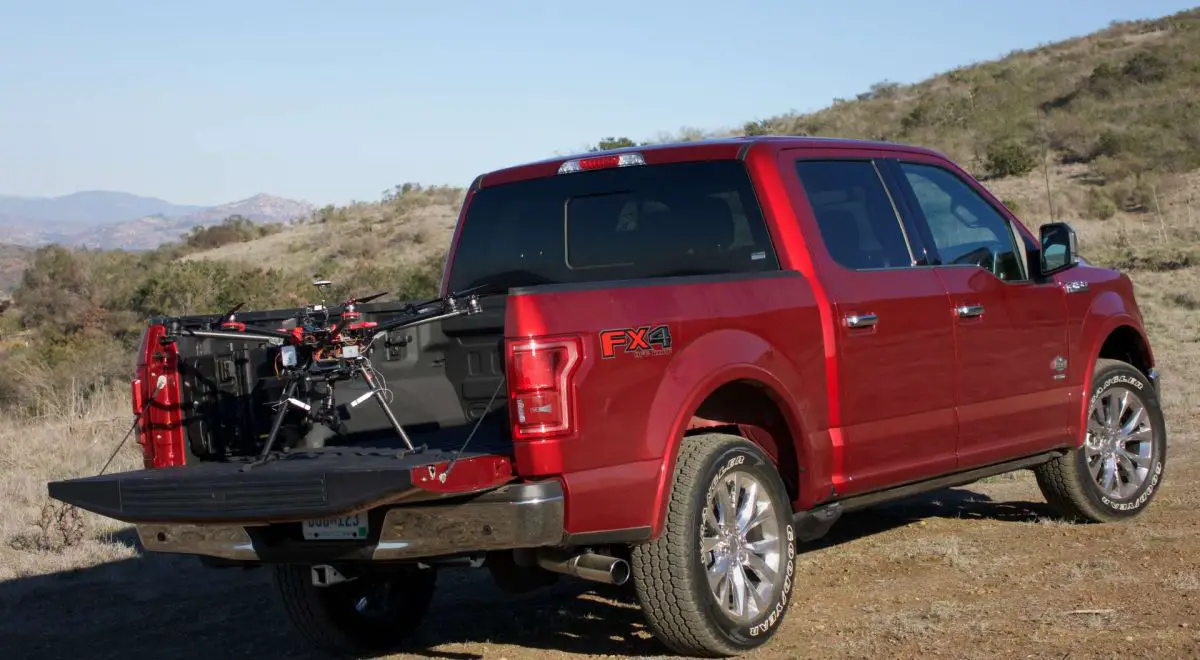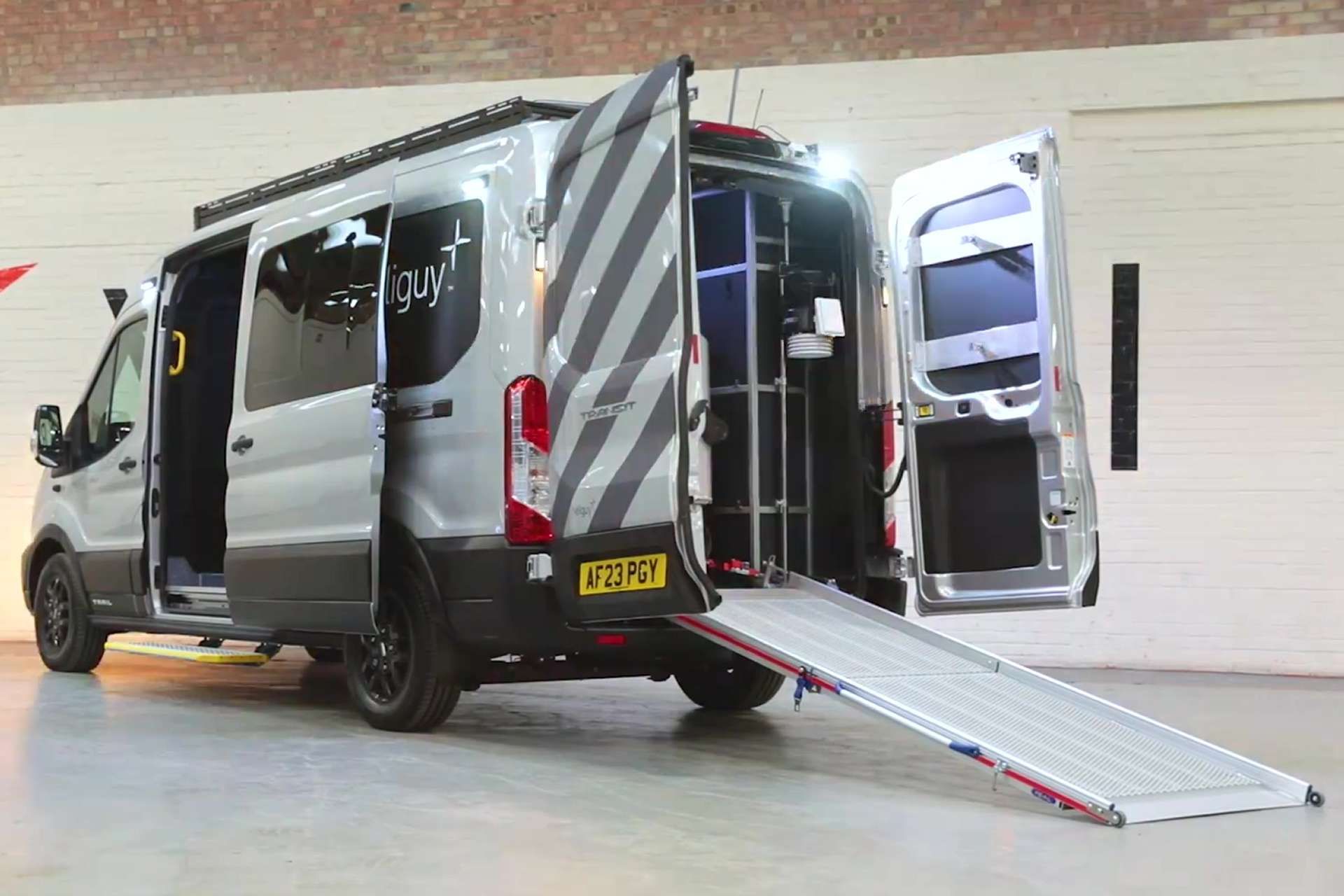Breaking News
Will Ford's future pickup trucks feature UAV landing platforms?.
Ford Motor Company is furthering its exploration into the integration of unmanned aerial vehicles (UAVs) with its vehicles, as demonstrated by recent patent filings and ongoing collaborative efforts. A new development reported by Ford Authority on August 9, 2024, involves a patent for a resilient UAV landing platform, which could be implemented in future Ford pickups. This patent, filed on February 8, 2023, and published on August 8, 2024, under serial number 0262546, is part of Ford’s ongoing work in drone-to-vehicle technology.
Follow Army Recognition on Google News at this link

Ford's involvement in UAV technology dates back to the DJI Developer Challenge, announced at the 2016 Consumer Electronics Show (CES), which focused on developing software for real-time communication between Ford vehicles and drones, with the goal of creating a deployable surveying system for emergency services. (Picture source: Ford)
This patent is among several related to UAVs that Ford has filed in recent years, indicating the company’s interest in UAV technology in automotive applications. Previous patents have included a moonroof docking system, a vehicle-mounted aerial drone container, and a collaborative system that allows interaction between a UAV and a car. These filings suggest that Ford is investigating various potential uses for UAVs in vehicles, including cargo management and aerial photography, as well as military-related reconnaissance.
One of the earlier patents, filed on October 28, 2019, and published on January 10, 2023, describes a moonroof docking system for UAVs. This system involves storing and deploying drones from a recessed compartment within the vehicle's moonroof. The system includes mechanisms for charging and cooling the UAV, keeping it ready for deployment when needed. This concept is an example of Ford’s work on integrating UAV storage directly into vehicles.
Another patent, filed on February 14, 2018, and published on May 23, 2023, details a UAV landing platform designed for vehicles. This platform includes a rotating plate with multiple pins to secure the UAV during landing, which could be important for ensuring safe drone operation, especially when the vehicle is moving or when the UAV is experiencing turbulence.

The Drone Support Vehicle from Heliguy and Venari, based on a Ford Ranger pickup, features a 'ready-to-fly drone mechanism' that allows various drone models, such as the DJI M30 Series or M300 RTK, to be safely transported while fully assembled and prepared for rapid deployment. (Picture source: OHVC)
The newly published patent for a resilient UAV landing platform addresses the challenges of rugged landings and difficult environmental conditions. The design includes "protuberances" on a base plate to cushion the UAV during hard landings, reducing the potential for damage. This design is particularly relevant for off-road situations where UAVs might need to land on uneven or unstable surfaces. The platform could be mounted on the roof or in the bed of a pickup, providing flexibility in UAV operations with the vehicle.
Ford's involvement in UAV technology extends back to the DJI Developer Challenge, announced at the Consumer Electronics Show (CES) in 2016. This challenge focused on developing software for real-time communication between Ford vehicles and drones, aiming to create a deployable surveying system for emergency services. Ford partnered with DJI, a drone manufacturer, to develop a system allowing first responders to deploy drones from the cab of an F-150 truck in disaster zones. The system was designed to map and survey areas that were otherwise inaccessible, using Ford’s SYNC® AppLink and OpenXC platforms. Potential applications included emergency response, as well as defense, agriculture, forestry, and construction.
Ford's work in integrating UAVs with its vehicles is part of its broader strategy, Ford Smart Mobility, which focuses on advancing the company's capabilities in connectivity, mobility, autonomous vehicles, and data analytics. The integration of UAVs with Ford vehicles aligns with this strategy and reflects the company’s approach to addressing the growing role of drones in both commercial and defense sectors.

Based on a Ford Transit Trail, the British Drone Command Unit, equipped with integrated real-time monitoring, satellite connectivity, and drone-in-a-box technology, is designed for mission-critical UAS operations. (Picture source: OHVC)


























